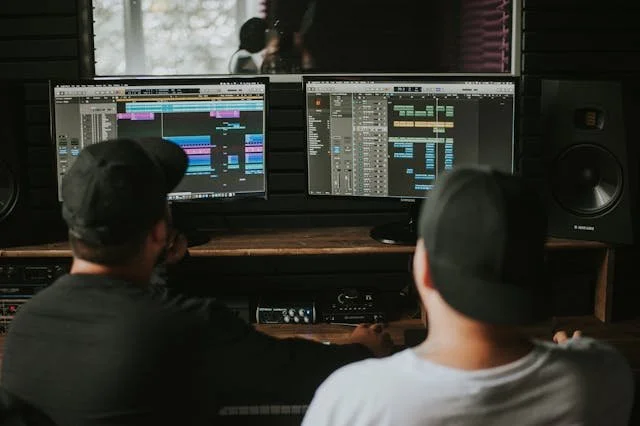Top Strategies for Emerging Artists to Succeed in the Music Industry Heading into 2026
Photo Credit: John Taran
As the music industry continues to evolve at a rapid pace, emerging artists face both unprecedented opportunities and challenges heading into 2026. With streaming platforms dominating consumption, AI tools revolutionizing creation, and social media enabling direct fan engagement, independent musicians can no longer rely solely on talent alone. Success demands a strategic approach that combines creativity with business acumen. According to industry reports, the global recorded music market is projected to reach $33.6 billion in 2026, driven by emerging markets and superfan economics. For aspiring artists, this means focusing on building authentic connections, diversifying revenue, and leveraging technology to stand out in a crowded digital landscape.
In this comprehensive guide, NxtNow Music will explore proven strategies tailored for emerging artists aiming to thrive in 2026. From personal branding and content distribution to marketing tactics and monetization, these tips are drawn from current trends like the rise of short-form content, AI integration, and blockchain for ownership. We'll also highlight essential tools that can streamline your workflow and boost your visibility. Whether you're a singer-songwriter, producer, or band starting out, implementing these strategies can help you build a sustainable career. By the end of this article, you'll have actionable steps to position yourself for success in the dynamic music world of 2026.
Building a Strong Personal Brand in 2026
In 2026, personal branding is more than just a logo or aesthetic—it's the core of how emerging artists connect with fans and industry professionals. With superfans becoming a key driver of revenue, authenticity is paramount. As noted in recent analyses, establishing genuine connections can differentiate you in an oversaturated market. Start by defining your unique story: What makes your music stand out? Is it your genre fusion, lyrical depth, or cultural background? Use this narrative across all platforms to create consistency.
One effective strategy is to optimize your online presence. Set up a professional website using tools like Squarespace or WordPress, ensuring it's mobile-friendly and includes an Electronic Press Kit (EPK). Your EPK should feature high-quality photos, bio, discography, and press clippings. Consistent handles on social media (e.g., @YourArtistName across Instagram, TikTok, and X) help build recognition. For emerging artists, this digital footprint is crucial for pitching to playlists or labels.
Long-lead planning is another game-changer. As highlighted in artist development discussions, preparing for "Artists to Watch 2026" lists requires starting now—submit to publications like Billboard or Rolling Stone early. Incorporate visual storytelling: Share behind-the-scenes content that reveals your process, vulnerabilities, and growth. Platforms like TikTok reward vulnerability, where raw clips can go viral and attract loyal followers.
Additionally, leverage AI for branding. Tools powered by AI can generate custom artwork or suggest color palettes that align with your vibe. But remember, human touch is key—fans crave realness in an era of AI-generated music. Track your brand's progress with analytics: Monitor engagement rates and audience demographics to refine your image. By 2026, artists who treat branding as a business asset will outpace those who don't, turning casual listeners into dedicated supporters.
Finally, consider sustainability in branding. With climate concerns rising, position yourself as an eco-conscious artist—use recycled merch or carbon-neutral touring. This resonates with Gen Z fans, who prioritize values. Building a brand isn't overnight; it's a marathon of consistent effort that pays off in loyalty and opportunities.
Content is king in the 2026 music landscape, but for emerging artists, it's about smart creation and strategic distribution. With streaming dominance expected to grow, producing high-quality, frequent content is essential. Focus on short-form videos, as platforms like TikTok and Instagram Reels continue to drive discoveries. Create snippets of your songs, remixes, or challenges that encourage user-generated content—think "duet this with your version."
Quality production is non-negotiable. Invest time in home studios; trends show DIY setups yielding professional results. Experiment with AI-assisted composition to speed up ideation, but ensure your unique voice shines through to avoid blending into the noise.
Distribution strategies must evolve. Use services to get your music on all major DSPs (Digital Service Providers) like Spotify, Apple Music, and emerging platforms in markets like Asia and Africa, where growth is explosive. Pitch to playlists early—curators favor tracks with organic buzz. Build pre-release hype with teasers and countdowns on social media.
Collaborate digitally: Virtual sessions via platforms allow global partnerships, expanding your reach. For videos, use user-friendly editing apps to create visually stunning content that aligns with AR/VR trends, potentially integrating metaverse performances.
Monetize content directly: Upload to YouTube for ad revenue or Bandcamp for fan-supported sales. Track performance with built-in analytics to iterate—what resonates? Adjust based on data, like shifting to live streams if engagement spikes.
In 2026, distribution isn't just uploading; it's about ecosystems. Own your data by collecting emails during releases, building a direct-to-fan channel immune to algorithm changes. This strategy ensures your content not only reaches audiences but converts them into lifelong fans.
Effective Marketing and Promotion Strategies
Marketing in 2026 for emerging artists shifts from broad blasts to targeted, data-driven campaigns. With short-form content reigning supreme, prioritize platforms where virality happens fast. Start locally: Book gigs at small venues to build buzz, as live music revival emphasizes grassroots growth. Use tools for gig booking and promotion to maximize turnout.
Digital ads are key—run low-budget campaigns on Meta or TikTok targeting similar artists' fans. A/B test creatives: Short clips with hooks perform best. Develop a content calendar: Post consistently, mixing music teasers with personal stories to foster community.
PR remains vital. Pitch to blogs and podcasts for features; services help connect with influencers. For 2026, focus on "superfan" cultivation—offer exclusive content via newsletters or apps to turn passive listeners into advocates.
Leverage NFTs and blockchain for unique promotions, like limited-edition digital merch, tapping into ownership trends. Collaborate with non-music influencers (e.g., lifestyle bloggers) for cross-audience exposure.
Measure ROI: Use analytics to track streams post-campaign. Adjust based on what drives engagement—perhaps AR filters for interactive promo.
Ultimately, successful promotion in 2026 blends tech with authenticity, creating campaigns that feel personal yet scalable.
Networking and Collaboration Opportunities
Networking is the unsung hero for emerging artists in 2026. With the industry emphasizing connections, start by attending virtual and in-person events like conferences or online forums. Platforms facilitate collabs, allowing remote partnerships that expand your sound and audience.
Build relationships with A&Rs, managers, and peers through consistent outreach—DMs on X or LinkedIn work wonders. Join communities like Reddit's r/musicindustry for advice and opportunities.
Collaborations amplify reach: Co-write with producers or feature on tracks to tap new fanbases. Tools for virtual studios make this seamless.
Mentorship is crucial—seek guidance from established artists via programs or direct approaches. In 2026, AI matchmaking might connect you with compatible collaborators.
Don't overlook local scenes: Perform at open mics or festivals to forge real-world bonds. Success stories often stem from these grassroots networks.
Track your network: Use CRM apps to manage contacts, ensuring follow-ups lead to gigs or deals.
Effective networking turns solitary creation into a collaborative powerhouse, accelerating your rise.
Essential Tools for Emerging Artists in 2026
Tools are indispensable for independent musicians navigating 2026's tech-driven industry. Here's a curated list to enhance your workflow.
Spotify for Artists: Claim your profile for analytics, playlist pitching, and fan insights—essential for distribution strategies.
DistroKid or Ditto: Affordable distribution to all platforms, keeping royalties high. Ideal for self-releasing.
One Submit or Groover: Pitch tracks to bloggers and playlists with feedback—boosts promotion efficiency.
Canva or CapCut: Free design and video editing for visuals and Reels—perfect for marketing content.
Bandcamp: Direct sales and fan engagement, great for merch and exclusives.
Audacity or Cakewalk: Free DAWs for production, enabling pro sound from home.
GetResponse: Email marketing for newsletters, building direct audiences.
Disco or Musixmatch: Analytics and lyrics distribution to enhance visibility.
Patreon: Subscription-based support for recurring revenue.
Followr: Manage social media posts across platforms.
These tools, many free or low-cost, empower you to compete without labels. Integrate them into your strategies for maximum impact.
Conclusion
Heading into 2026, emerging artists who adopt these strategies—branding, content mastery, marketing, networking, diversification, and tool utilization—will be poised for success. The industry favors those who blend creativity with data-driven decisions and authentic engagement. Start implementing today: Define your brand, create compelling content, and leverage tools to amplify your voice. With persistence, the music world of 2026 could be yours to conquer.

